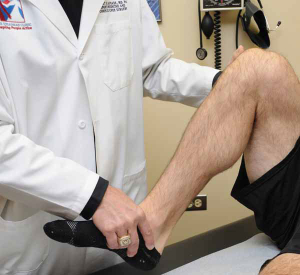Knee flexion is assessed by maximally flexing the knee as far posteriorly as possible. In the face of an acute injury or for patients who have pain from swelling, full flexion may not be assessable because of too much pain. Limitations of knee flexion should always be compared to the opposite knee. In general, most limitation of knee flexion is due to an acute injury, knee swelling, meniscus tear, or arthritis.
About the Author: Robert LaPrade, MD
Robert LaPrade, MD, PhD has specialized skills and expertise in diagnosing and treating complicated knee injuries. He has treated athletes at all levels, including Olympic, professional and intercollegiate athletes, and has returned numerous athletes back to full participation after surgeries. Recognized globally for his outstanding and efficient surgical skills and dedication to sports medicine, he has received many research awards, including the OREF Clinic Research Award considered by many a Nobel Prize in orthopedics. Dr. LaPrade is one of the most published investigators in his field, and many of the surgeries that he has developed are now performed worldwide and recognized as the “gold standard” for the treatment of complex knee injuries.

